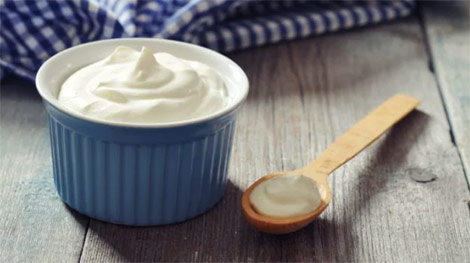No. of views : (4534)
How to make the perfect curd at home?
Posted on: 07/Dec/2018 11:25:35 AM

Such a versatile dairy product is curd! It is one of the most favorites for people of all age groups! Right from babies to kids to adults to elders. It is too good to health and easy to make recipes with. Often times, we find people using store-bought curd packets! But that�s absolutely not necessary unless you are in an emergency to quickly grab the probiotic!
Difference between curd and yogurt.
Before getting into how to actually make curd at home, you have to know the actual difference of yogurt and curd. Here you go:
Basically, curd is homemade. It is prepared using curd by itself. In case of yogurt, it is prepared using bacterial fermentation supported by Lactobacillus bulgaricus and Streptococcus thermophiles. There are artificial flavoring agents added to yogurt such as strawberry, mango, peach, kiwi, etc. Coming on to the nutritional value of the two, it is definitely curd that excels, as it is all-natural. It contains a lot of calcium, vitamin B6, Potassium, etc.
Here is how you make thick, creamy, rich curd using natural, homemade process.
This post is purely for those who struggle to achieve the creamy fresh curd. This contains useful tips as to how to achieve it, but if you are already an expert, you may tweak your process with this post, if required.
Full fat milk is a must: Make sure to have full fat milk to prepare curd. If you use diluted milk, the resulting curd may be watery too, and not thick and creamy
Sticky curd: When you get sticky curd, you are not alone to be blamed. The reasons may be various including the brand of milk, the brand of curd used for the curdling process, and the feed the cow takes (in case you procure straight from milk vendors). So, when it is sticky, try a different brand of milk or a different vendor.
Volume of curd required for curdling: This depends on couple of different factors. The quantity of curd needed for the entire process of curdling is quite tricky.
What type of milk do you use? Is that homogenized? Homogenized milk usually require more starter curd. On the other hand, non-homogenized milk doesn�t require much curd as starter. They set better too.
The type of starter curd is also important. Does that contain gelatin? If it contains gelatin, more of curd will be needed. If it doesn�t contain gelatin, lesser curd would suffice
Weather conditions � this is a major part in preparing curd. When the climatic conditions is such that too cold, you may need more curd for curdling.
Basically, for half a litre of milk, about 50ml of curd can be used as a starter.
The right utensil for curdling:
For curdling, the right vessel is to use a mud pot. Ever-silver utensils or casserole may also help too.
Always make sure that the temperature of milk comes down to lukewarm or room temperature. Only then the starter curd should be added for initiating the curdling process. Usually, curdling can be done overnight as you can use it afresh in the next morning.







